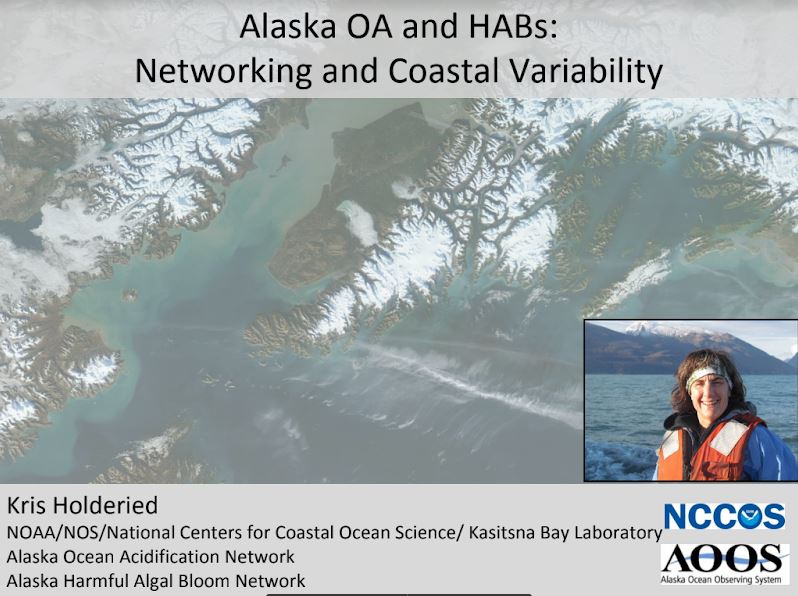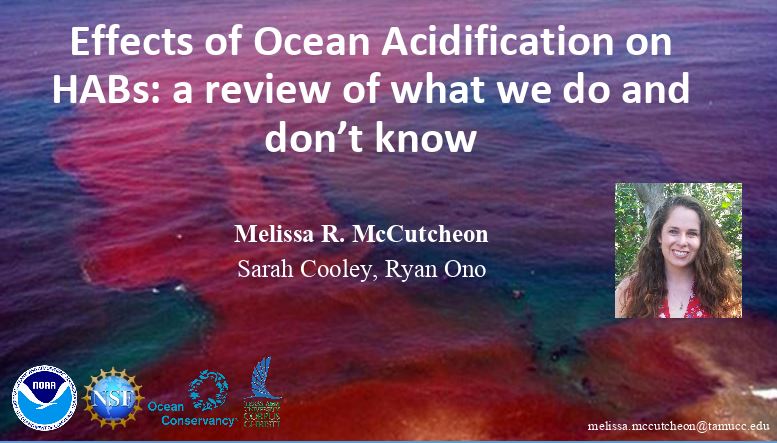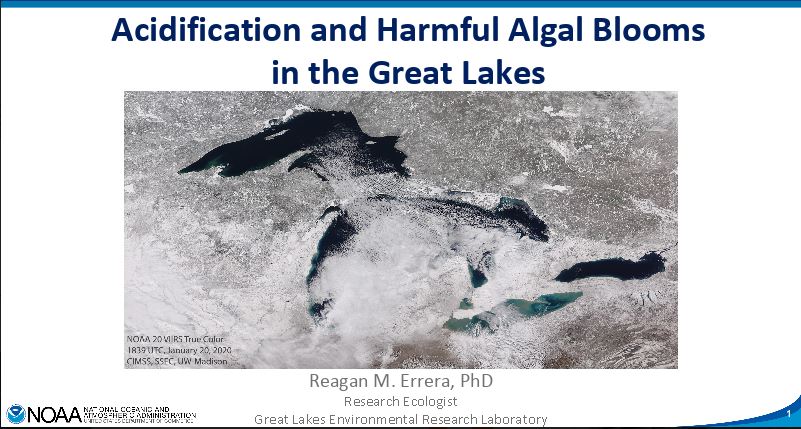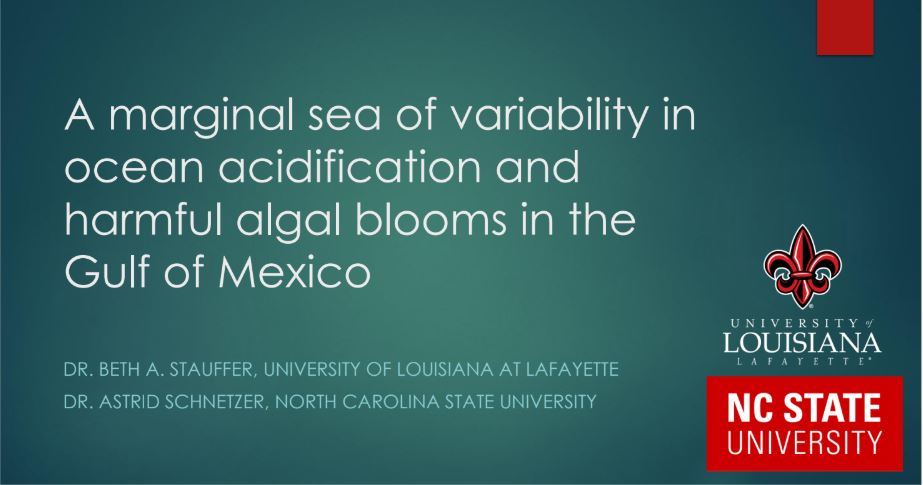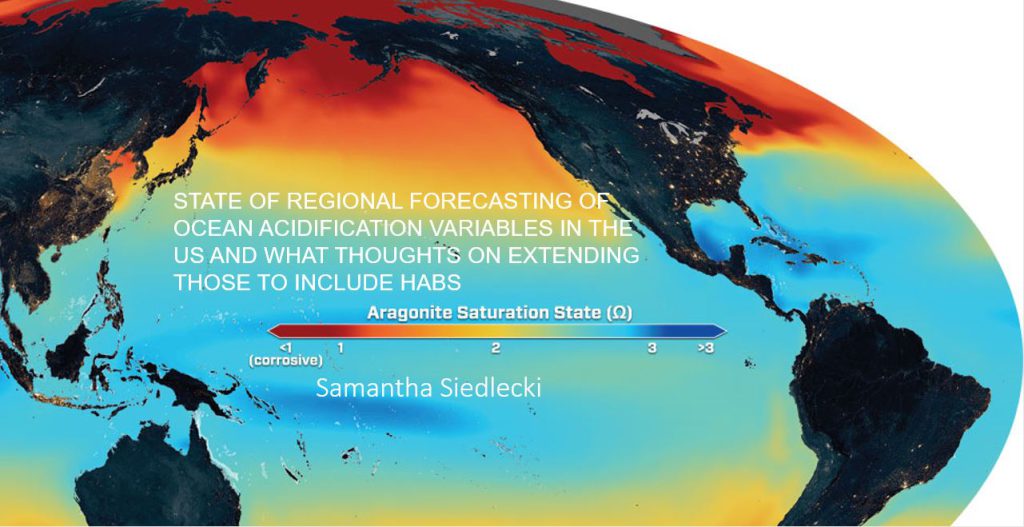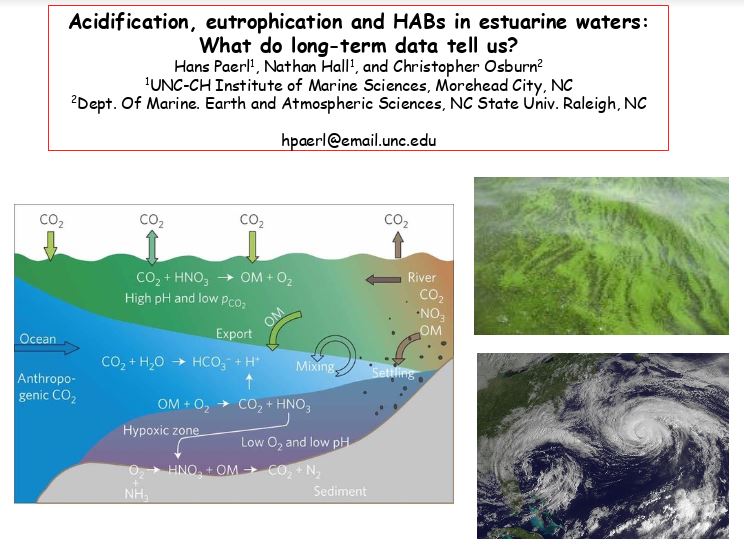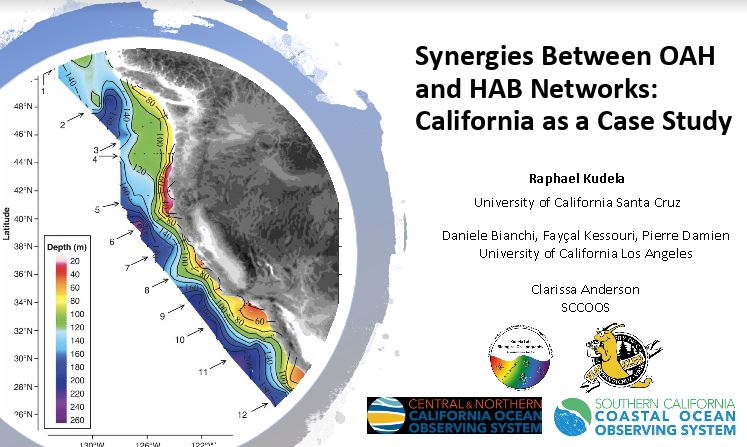Alaska Ocean Acidification and HABs: Networking and coastal variability
Dr. Kris Holderied, NOAA Kasitsna Bay Laboratory, Coastal discusses how marine species, fisheries, subsistence harvests and mariculture operations in Alaska have long been adversely affected by harmful algal blooms (HABs), especially paralytic shellfish poisoning events, with events increasing during recent marine heat waves. Alaska shellfish and fish species, and the marine industries that depend on them, also face potential near-term threats from ocean acidification (OA), due both to the presence of “cold and old” ocean waters with low pH and low aragonite saturation on the shelf, as well as biological and physical processes that change acidification conditions spatially in estuary and coastal waters, as well as on daily to seasonal to interannual time scales. Scientists, resource managers, public health officials, oyster farmers, fishermen, Alaska Native tribes, and other stakeholders have come together in statewide collaborations to address HAB and OA threats in Alaska through improved communication, monitoring, research and event response.
View the recording and complete this questionnaire after viewing.
Alaska Ocean Acidification and HABs: Networking and coastal variability Read More »
